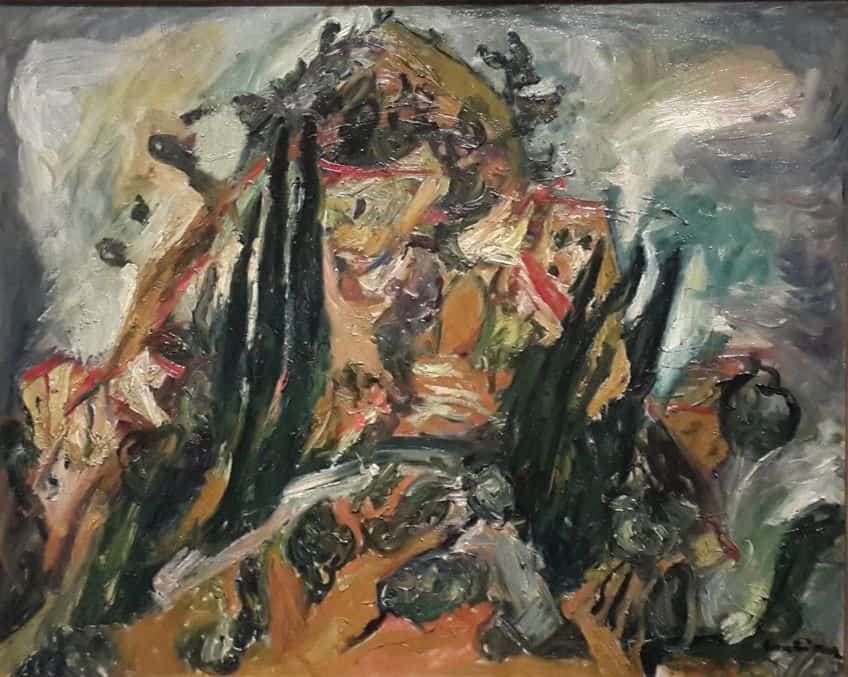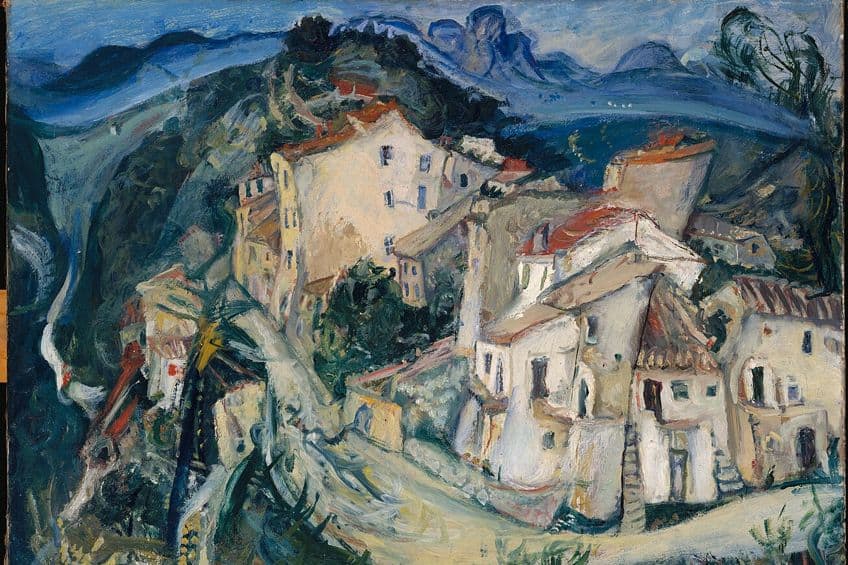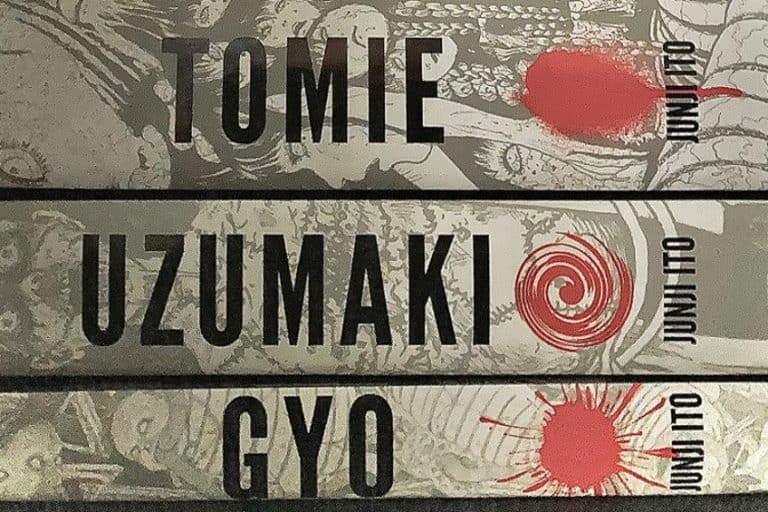Chaïm Soutine – A Master of French Expressionism
Chaïm Soutine was a Belarusian-born French painter whose expressive and impassioned works positioned him as a significant figure within the School of Paris. Known for his vibrant, distorted depictions of landscapes, still lifes, and portraits, Soutine’s style fused the emotional intensity of the Expressionists with the technical prowess of the Old Masters. He often chose subjects from everyday life, capturing the raw essence of his surroundings with a visceral energy that conveyed deep psychological insight. Despite his relatively short life, Soutine’s unique approach and bold use of color and form have left an indelible mark on 20th-century art, influencing subsequent generations of artists.
Key Takeaways
- Chaïm Soutine was a key figure in the expressionist art movement.
- His bold use of color and dynamic brushstrokes are hallmarks of his style.
- Soutine’s influence extends to later movements like Abstract Expressionism.
Early Life and Education
| Birth | January 13, 1893 |
|---|---|
| Death | August 9, 1943 |
| Place of Birth | Smilavichy, Russian Empire (now Belarus) |
| Genre of Work | Painting, École de Paris, and Expressionism |
Chaïm Soutine, a French painter of Belarusian-Jewish origin, was a significant figure in the expressionist movement. Born on January 13, 1893, Soutine moved to Paris, where he became a part of the School of Paris alongside other influential artists. His vivid and emotional art style, characterized by thick impasto and dynamic brushstrokes, profoundly impacted the art world.

Soutine’s works often depicted everyday subjects like carcasses, landscapes, and portraits with intense colors and bold textures. His unique approach was influenced by masters such as Rembrandt and Chardin, yet he infused his pieces with a raw, emotional depth. Living in Paris allowed Soutine to interact with other avant-garde artists, which further shaped his artistic vision. Despite a challenging life, Soutine’s legacy endures through his powerful paintings that continue to captivate audiences. His contributions to expressionism have left an indelible mark, influencing movements like Abstract Expressionism and inspiring future generations of artists.
His Journey from Smilavichy to Vilna
Soutine’s early years in Smilavichy were marked by poverty and hardship. His father, Zalman, struggled to support the large family, creating a challenging environment for young Chaïm. Despite these difficulties, Soutine displayed a keen interest in drawing from a young age. In 1910, seeking better opportunities, he moved to Vilnius. There, he enrolled at the Vilna Academy of Fine Arts. This move was pivotal, as it marked the beginning of his formal training in art.
The academy provided a space where Soutine could refine his skills and immerse himself in new artistic techniques and ideas.
Artistic Beginnings
At the Vilna Academy of Fine Arts, Soutine studied under prominent artists of the time. The academy’s rigorous curriculum helped hone his abilities and exposed him to various styles and methodologies. It was here that Soutine began to develop his distinctive expressionist style. Despite financial difficulties, Soutine’s dedication to art remained unwavering. After completing his studies in Vilna, he traveled to Paris in the early 1920s to further his education. In Paris, he joined the art community in Montparnasse and studied at the École des Beaux-Arts. This period was crucial for Soutine, as he made valuable connections and refined his unique artistic voice.

Mature Period
During the 1920s and 1930s, Soutine’s work gained recognition. His mature period was characterized by intense, vibrant colors and emotional depth. He was particularly known for his portraits and still lifes, often featuring raw and visceral subjects. In Paris, Soutine mingled with other avant-garde artists, which influenced his work. His unique approach caught the attention of collectors and critics, solidifying his place in the art world.
His series of paintings depicting carcasses, such as Flayed Rabbit and beef cuts, remain some of his most notable works.
Later Period and Death
In the later years of his life, Soutine’s health began to decline. Despite his physical challenges, he continued to paint, producing works that reflected his inner turmoil and complex emotions. His later paintings often featured somber tones and more subdued color palettes. During World War II, as a Jewish artist in Nazi-occupied France, Soutine faced immense peril. He spent much of the war in hiding, constantly on the move to avoid capture. Tragically, in 1943, he succumbed to a perforated ulcer. Despite his relatively short life, Soutine left a lasting impact on the world of art.

Artistic Accomplishments
Soutine’s contributions to art were significant. He is recognized for his powerful use of color and emotion. His works are housed in major museums worldwide, including the Museum of Modern Art in New York and the Centre Pompidou in Paris. Soutine’s influence on expressionism is profound, with many considering him a pioneer of the movement. His ability to convey raw emotion through his brushstrokes continues to resonate with contemporary audiences.
Soutine’s legacy endures, reflecting the depth and intensity of his artistic vision.
Parisian Influence and Artistic Evolution
Chaïm Soutine’s artistic journey in Paris significantly shaped his unique style and solidified his position as a key figure in the Expressionist movement. The influences from his environment and relationships played crucial roles in his development.

Montparnasse: The Artists’ Melting Pot
Montparnasse in Paris was a vibrant hub for artists in the early 20th century. Soutine moved there and became part of the bustling artistic community. He lived in the famous artist colony, La Ruche, which was home to many aspiring artists, including Marc Chagall and Amedeo Modigliani. This exposure to different styles and perspectives enriched Soutine’s artistic vocabulary. The freedom and diversity of Montparnasse allowed him to experiment and find his own voice.
The area’s energetic environment nurtured his creativity, leading to the intense and emotional style he became known for.
Key Relationships and Inspirations
Soutine’s friendships deeply influenced his work. His relationship with Amedeo Modigliani was particularly significant. Modigliani introduced him to key art dealers, helping Soutine gain recognition. He was also friends with Pinchus Kremegne and Michel Kikoine, fellow members of the School of Paris. These connections provided support and motivation. Soutine admired the works of older masters like Rembrandt and Chardin, which inspired him to pursue a bold and expressive approach. The influence of his peers and mentors is evident in the intensity and texture of his works, reflecting the emotional depth and complexity of his inner world.

Signature Themes and Techniques
Soutine’s works are characterized by their vivid colors and dynamic brushwork. One of his renowned series is Carcass of Beef, which captures the rawness of his emotional experience. His landscapes, particularly those of Céret, depict distorted, swirling forms that convey a sense of turmoil. He often depicted ordinary subjects like bellboys, pastry cooks, and flowers, imbuing them with a visceral intensity. Soutine’s Expressionist style was marked by his desire to go beyond mere representation, capturing the essence and emotional truth of his subjects.
This approach set him apart and cemented his legacy in modern art.
Notable Artworks
Chaïm Soutine, a French painter, is celebrated for his vibrant use of color, dramatic compositions, and unique approach to portraiture and still life. His innovative methods left a lasting impact on the Expressionist movement.

Innovations in Portraiture and Still Life
Soutine’s portraits and still lifes are highly expressive and often imbued with a sense of movement. His ability to distort shapes without losing the essence of his subjects is remarkable. For instance, his Portrait of a Woman and Still Life with Rayfish demonstrate his skill in blending realism with abstract elements. This technique allows viewers to experience the inner emotions of the subjects.
Soutine’s still lifes often featured unconventional subjects like beef carcasses, showcasing his interest in texture and the physicality of paint.
Mastery of Color and Form
Soutine’s mastery of color and form is evident in his daring use of vibrant hues and bold, sweeping brushstrokes. In works like Carcass of Beef and View of Cagnes, his colors are not just visually striking but also emotionally powerful. He employed color to evoke a visceral reaction in the viewer, emphasizing the raw, often unsettling beauty of his subjects. His ability to balance colors and form creates a dynamic tension in his compositions.

Dramatic and Expressive Compositions
Soutine’s compositions are known for their intense emotion and dramatic flair. In paintings such as Carcass of Beef, he used dramatic lighting and exaggerated forms to heighten the emotional impact. His technique of swirling, almost chaotic brushstrokes gives his work a sense of immediacy and movement.
This approach allows the viewer to feel the energy and emotion behind the paint, making his works deeply moving.
Critical Reception and Legacy
Chaïm Soutine, a notable figure in Expressionism, garnered attention for his unique artistic style and emotional intensity. His legacy continues to influence many modern artists and movements.

Prominent Exhibitions and Collectors
Soutine’s artwork received critical acclaim and was collected by significant patrons. One of the most notable collectors was Albert C. Barnes, who acquired 52 of his paintings in the early 1920s. This patronage brought Soutine’s work to a wider audience in the United States. Prominent exhibitions include the Jewish Museum in New York (1998) that showcased his work in an unorthodox manner, and the Los Angeles County Museum of Art.
These exhibitions highlighted not only his individual style but also his cultural influences.
Influence on Later Movements and Artists
Soutine’s expressive brushwork and vivid colors influenced many later movements, particularly Abstract Expressionism. Artists like Jackson Pollock and Willem de Kooning acknowledged his impact on their techniques. His focus on the raw, visceral nature of his subjects set a precedent for emotional depth and intensity in modern art. He played a crucial role in bridging the gap between traditional European Expressionism and the emerging American art scene. His influence is evident in the works of many contemporary painters who explore similar themes of emotion and texture.

Remembering Soutine: Death and Posthumous Recognition
Soutine’s life was cut short in 1943 due to complications from stomach ulcers. Despite his early death, his influence continued to grow. Posthumous exhibitions, such as those at the Galerie Nationale du Jeu de Paume in Paris and the Mr. and Mrs. Klaus G. Perls Collection, further cemented his legacy. Critics and scholars have revisited his works, often reflecting on how his background as a Jewish immigrant influenced his unique perspective. His visceral depictions of subjects like the Slaughtered Ox remain some of the most powerful images in art history.
Chaïm Soutine’s legacy as an artist lies in his ability to transcend traditional artistic boundaries, imbuing his works with a sense of emotional urgency and raw vitality that continues to resonate today. His unique vision, characterized by bold colors and dynamic brushstrokes, brought an intense psychological depth to his subjects, whether they were landscapes, still lifes, or portraits. Soutine’s influence can be seen in the works of later artists who admired his expressive power and fearless exploration of form. Through his passionate and often tumultuous life, Soutine contributed a distinct voice to the narrative of modern art, ensuring his place in the annals of art history as a pioneer of expressive painting.
Frequently Asked Questions
What Are the Characteristics of Chaïm Soutine’s Painting Style and Technique?
Chaïm Soutine’s painting style is noted for its bold use of color and dramatic brushwork. He often employed impasto techniques, where paint is applied thickly to create texture. His works are emotionally intense, with subjects ranging from still lifes to landscapes and portraits. Soutine’s compositions frequently display a sense of movement and distortion.
What Was Chaïm Soutine’s Influence on the Expressionist Movement?
Soutine made important contributions to the expressionist movement by merging elements of traditional European painting with modernist experimentation. His powerful, emotive use of color and form influenced many contemporaries and later artists. His ability to convey raw emotion through exaggerated and distorted figures helped shape the development of modern art.
Which Famous Paintings by Chaïm Soutine Are Considered Masterpieces?
Some of Chaïm Soutine’s most acclaimed works include Carcass of Beef, The Little Pastry Cook, and Woman in Red. These paintings exhibit his signature style of vivid colors and expressive brushstrokes. Carcass of Beef, in particular, is well-known for its dramatic composition and visceral intensity.
What Is the Legacy of Chaïm Soutine’s Work in the Modern Art World?
Chaïm Soutine’s legacy in the modern art world is significant. He is regarded as a key figure in the School of Paris and an influential voice in expressionism. His exploration of emotion through bold technique continues to inspire artists today. Museum exhibitions and scholarly studies of his work highlight his lasting impact on 20th-century art.
Isabella studied at the University of Cape Town in South Africa and graduated with a Bachelor of Arts majoring in English Literature & Language and Psychology. Throughout her undergraduate years, she took Art History as an additional subject and absolutely loved it. Building on from her art history knowledge that began in high school, art has always been a particular area of fascination for her. From learning about artworks previously unknown to her, or sharpening her existing understanding of specific works, the ability to continue learning within this interesting sphere excites her greatly.
Her focal points of interest in art history encompass profiling specific artists and art movements, as it is these areas where she is able to really dig deep into the rich narrative of the art world. Additionally, she particularly enjoys exploring the different artistic styles of the 20th century, as well as the important impact that female artists have had on the development of art history.
Learn more about Isabella Meyer and the Art in Context Team.
Cite this Article
Isabella, Meyer, “Chaïm Soutine – A Master of French Expressionism.” Art in Context. July 11, 2024. URL: https://artincontext.org/chaim-soutine/
Meyer, I. (2024, 11 July). Chaïm Soutine – A Master of French Expressionism. Art in Context. https://artincontext.org/chaim-soutine/
Meyer, Isabella. “Chaïm Soutine – A Master of French Expressionism.” Art in Context, July 11, 2024. https://artincontext.org/chaim-soutine/.











